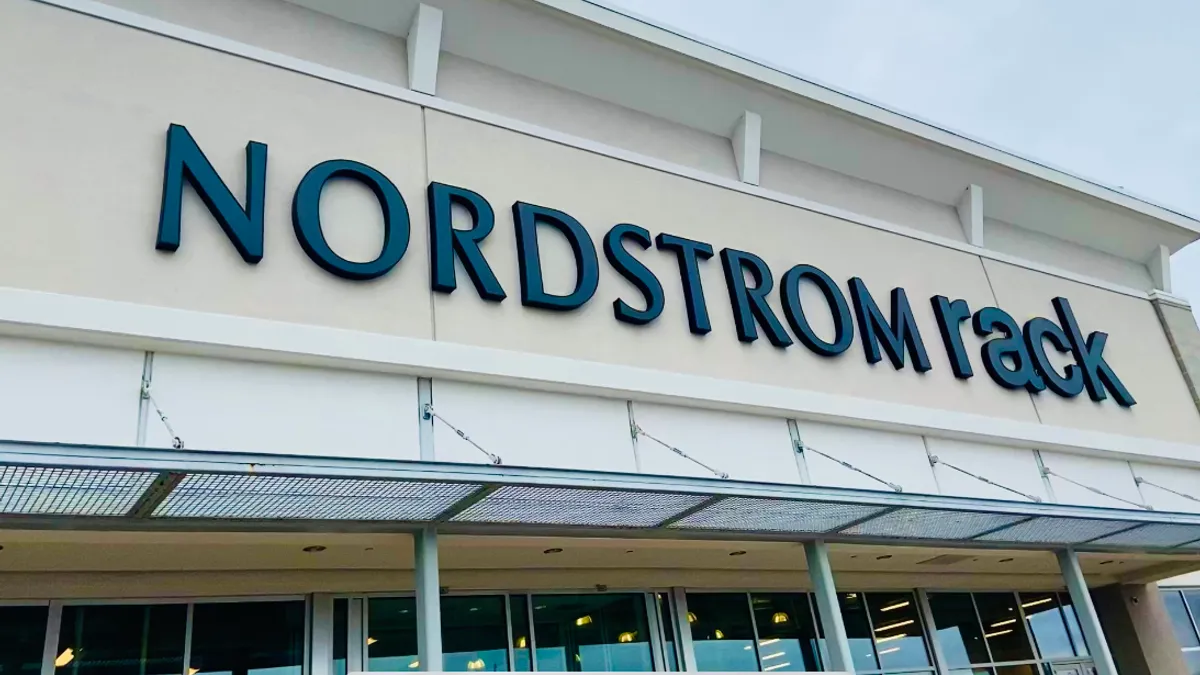Walmart is gaining on Amazon.
That might seem like an odd statement to make about a brick-and-mortar retail behemoth that rakes in almost four times more in retail sales than e-commerce leader Amazon. Here, though, the statement refers to online price, where Walmart has historically lagged Amazon.
But new research shows Walmart catching up on price. As the holiday season kicks into full gear — a high-volume period where price matters perhaps more than any other — the stakes are rising for everybody as Amazon and Walmart duke it out.
"What I've seen in the last year and a half, I think they've had a tremendous wakeup call from Amazon," Shelley E. Kohan, vice president of retail consulting at store analytics firm RetailNext, said in an interview. "And I think they're rising to the occasion."
Everyone is watching to see who will dominate the season — and how. Item-by-item price competition has the potential to be a race to the bottom, with big and small retailers, as well as suppliers, losing out.
While price battles on products are heated right now, experts say the fight between Amazon and Walmart has the potential to go beyond a conventional price war. New strategies and technologies can both accelerate and complicate one upsmanship on pricing, and they can open up other ways to bring value to customers.
Closing the gap
Walmart is determined to not cede the digital world entirely to Amazon. Its multibillion-dollar acquisition of Jet, and several other smaller, savvy online players, made that pretty clear.
"I think Walmart has always been dominant in pricing, and competitive in the low-pricing model. They're working really hard to continually compete with Amazon on pricing."

Shelley E. Kohan
Vice President, RetailNext
On price alone, Amazon has proven itself a leader online over time and in numerous studies. "I think Walmart has always been dominant in pricing, and competitive in the low-pricing model," Kohan said. "They're working really hard to continually compete with Amazon on pricing."
Walmart fell behind Amazon online for a variety of reasons, not the least of which is the cost of investment relative to returns, as Scott Galloway notes in his book, "The Four." Jared Wiesel, a partner with Revenue Analytics, points out that Walmart has been, and is still largely, a brick-and-mortar retailer and that's where its focus has been. But he also notes something else that could be at play.
"Amazon has been fairly or unfairly credited by Wall Street as more of a tech company than retailer," he said. That means the company "can get away with making little or no money on a product" and in effect "redefine what is considered a low price for an item."
But Walmart is rapidly closing the price gap.
An October study by e-commerce analytics firm Profitero found Amazon prices generally to be 11% less expensive than several key rivals' online prices but that Walmart was clearly "on the offensive." On average, Walmart's prices in that study were just 3% higher than Amazon's across 13 categories. Walmart was actually priced lower than Amazon in beauty (the only category where it beat Amazon) and came close in sports and outdoors, as well as baby products, according to Profitero.
Others have found the gap to be even narrower. According to a Market Track price study conducted for Reuters, prices at Walmart's website were just 0.3% more expensive than Amazon on average, compared to 3% higher than Amazon's in 2016. And some prices were lower, according to Reuters. That includes wearable technology, where Walmart's prices were 6.4% lower than Amazon this year, compared to 12.6% higher in the same period a year ago; and sports and outdoor products, with Walmart's prices 1.3% lower compared to 3.5% higher a year ago.
Meanwhile, November research from retail technology startup Boomerang Commerce found that "Amazon and Walmart are nearly neck-and-neck on pricing" for popular gifts. On Thanksgiving, for example, Walmart offered 40 items in its first page of deals compared to 26 for Amazon, and discounted at an average of 33.9% to Amazon's 36.9%, according to Boomerang.
Price spies
Posted prices are just the end result of a complicated, frenetic and ongoing process that is consuming Amazon, Walmart and everyone in their midst.
In pricing and other online technology, Sam Cinquegrani, CEO of software company ObjectWave, said in an interview that Walmart has made major gains since its acquisition of Jet. "When they acquired Jet, they bought a lot of technology," he said. "But I don't think there’s been enough time to mature that technology yet. It might be another season before we see Walmart play a significant role in this online game. But I think they’re going to be ones that are going to be hard to beat."
Price warriors in the digital age have a deep arsenal of weapons to do (or avoid) battle with. Chief among them, says Profitero Senior Vice President of Strategy Keith Anderson, are price optimization engines, and pricing intelligence and other data analytics. (Anderson defines Pricing intelligence as "collecting your competitors' regular and promoted prices on the same and similar items," which is among the services Profitero offers).
"Amazon is almost creating constant mini-experiments."

Keith Anderson
Profitero Senior Vice President of Strategy
Wiesel points out that pricing intelligence can go so far as regularly scraping the websites of competitors. Amazon can not only do this handily, but it's also developed technology to block the site-scraping bots of rivals, including Walmart, as Reuters reported this year. Others bury their best prices deep inside their websites and purchasing portals to fend off the spying eyes of scraping bots, Anderson said. Call these strategies pricing counterintelligence.
But pricing data is just one element feeding price optimization. Wiesel said consumer behavior data streams are vital to retail pricing decisions as well. Here again, Amazon has a major advantage, both in the maturity of its algorithms and the sheer volume of data it commands as the e-commerce leader (it controls nearly half the market). Amazon can look, with incredible speed and frequency, at what is being bought, when and for what price, Wiesel said. "Amazon is almost creating constant mini-experiments" to suss out consumer patterns and build models, he said.
With data in hand, Amazon and other large digital retailers can then feed them in optimization algorithms "to define at a point in time, on a given product, the optimal price," Anderson said. Along with data, retailers can include "all kinds of rules and logic that can be baked into" the optimization engines, like the extent they are willing (nor not) to be beat by rivals or lose money on a sale.
While some, like Amazon, might set those prices automatically, others (typically traditional brick-and-mortar retailers) might make decisions daily based on the numbers the algorithms spit out and give their merchants the ability to weigh in, according to Anderson. That can keep a retailer in good standing with their vendors. It can also prevent mishaps. As Anderson points out, "every once in awhile the system goes haywire," with products wildly over- or underpriced. (In 2011, as just one example, a book on Amazon listed a price of $23.7 million.)
While the systems might have glitches, Amazon's technology gives it a major advantage. As a Nov. 24 Boomerang report pointed out, Amazon is "playing aggressive offense (dynamic pricing) and defense (bot-blocking and in-cart pricing vs. product detail page pricing) to beat traditional retailers who don't have sophisticated dynamic pricing and scraping technology."
A 'smart' price war
Beyond technology, there is another tool bag full of strategies retailers are deploying to win shoppers in the holiday season, such as bundling products with services, creative discounting and more. Anderson said Amazon is especially good at rotating lightning deals, offering a limited supply of a product at a breakneck price for a limited time, in effect "replicating treasure hunt that Costco represents."
And then there's Walmart's Jet with its Smart Cart, which Anderson said goes beyond traditional (and often mutually destructive) direct price competition to let consumers share in some of the tradeoffs retailers make when selling products. Smart Cart shoppers can, for example, get discounts by waving their return options or if a product is sitting in a warehouse close to them. "They're trying to subtly incentivize consumers into behaviors that cost less for Jet.com to operate, and they're passing some of that savings back to the consumer," Anderson said.
"I don't think it's just a price war I think it's a strategic price war, or a smart price war. In the end, no retailer wants to lose money. It just doesn't make sense."

Sam Cinquegrani
CEO of software company ObjectWave
Meanwhile, Walmart recently started offering lower prices on its website to consumers willing to go to its stores to buy the product. There's a good reason for this: "Walmart has a lot of commodities that don't really fold well into the shipping dynamic," Kohan said. Moreover, the effort could help the mass merchant drive customers into its stores, where it has a vast competitive advantage over Amazon (and everyone else), Kohan noted.
Walmart's move underscores another price war in retail, but one not typically discussed as such. As Wiesel puts it: "It wasn't that long ago that free shipping didn't exist. Then Amazon pushed free shipping. Now it's table stakes. For Amazon and Walmart, it can be seen as cost of doing business. For sellers of lower cost goods, it can eat into their profit."
More broadly, the bundling, smart carts, intricate discounting, alternate pricing and the rest are a way to avoid a full-on pricing war, which nobody wants. "I don't think it's just a price war," Cinquegrani said. "I think it's a strategic price war, or a smart price war. In the end, no retailer wants to lose money. It just doesn't make sense."
When retailers do try to outdo each other on price alone, the effect can be ugly — and some see it as happening now. (Profitero's October report, for instance, was titled "Price Wars.")
"I'm happy to see in the industry is transcending head-to-head competition on exactly the same items' shelf prices," Anderson said. "Because that's not sustainable for the retailers or the suppliers, but that has been escalating for the past 12 to 18 months. All that does is deflate that items' price across the market, and it leaves margin on the table for the retailer, who then pursues the supplier for savings on wholesale costs, which they can't sustain."
Kohan echoes that perspective. "The problem is when Walmart and Amazon are doing what we call tit-for-tat pricing on commodities, the impact is on the brand itself," she said. "What happens is brands are then pushed to meet the pricing. So the suppliers become squeezed on their costs, and so that will force them to make less profit — and I'm not sure anyone is in a position to make less profit. … Or it's going to prompt brands to find alternative marketplaces to sell to."
'A make-or-break scenario'
As the titans fight it out, there's also concern that retailers that aren't Walmart, Amazon or Target will suffer. As Moody's Investor Services analysts led by Charles O'Shea wrote in July, before the holiday price wars even kicked off, "As the biggest retailers fight over market share, smaller retailers are increasingly vulnerable."
"For any retailer, big or small, you need to find something you can own, something you can do better than anyone else, that your customer values, and if you do that you'll succeed."

Sam Cinquegrani
CEO of software company ObjectWave
O'Shea and his team noted that in the first quarter of the year, amid heavy promotional activity, "Amazon and Walmart still generated a combined $5.4 billion in retail revenue growth year-over-year. This ‘weak' growth was still more than the combined annual revenue for all of our [C-rated companies], except Sears." And for those smaller smaller retailers with more distressed balance sheets and tighter liquidity, "even $10 million in lost revenue for a quarter can create a make-or-break scenario," the analysts wrote.
And it's not just prices that are hurting retailers. The rush to catch up to Amazon in technology, shipping, and those advanced digital analytics and pricing technologies is taking its toll as well. "Almost every sub-segment of retail is feeling the looming shadow of Amazon's ever-increasing presence online," O'Shea and his team wrote. "Many retailers are doing a poor job assessing who their competitors really are, and that is hurting their ability to retain their performance edge."
So what, if anything, can smaller retailers do to compete? "You have to sell value, not just price," Cinquegrani said. He pointed to a client of his, a pharmacy chain based in Mexico, that guarantees delivery inside of one hour, using its stores as distribution points to make the logistics work. The guarantee, he said, gives customers something they want that they can't get anywhere else.
"For any retailer, big or small, you need to find something you can own, something you can do better than anyone else, that your customer values, and if you do that you'll succeed," Cinquegrani said. "It doesn't matter if you do this in the digital channel, or the traditional channel. As long as you can do something that your customer expects and appreciates and values, you'll be fine."
Kohan points to differentiated products, curated assortments, brand connections, authentic messaging and personalization as viable ways to compete with the bigger players. "The smaller niche brands have a better chance of competing against Walmart and Amazon," she said, pointing to Best Buy, which she says has invested in its mobile platform, technology and its staff. "I'm not sure they'll beat the price, but certainly they're offering a different package to the consumer."
And for retailers thinking about trying to compete on price? Maybe just say no, Kohan said. "Anyone trying to go up against the Goliaths on price — it's just not recommended."





















